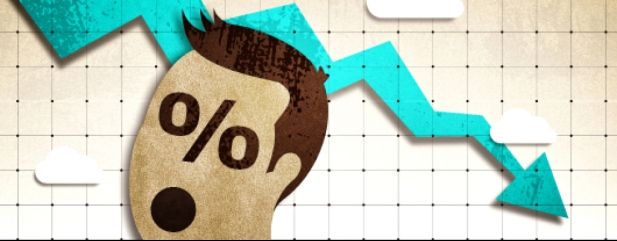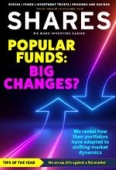Archived article
Please note that tax, investment, pension and ISA rules can change and the information and any views contained in this article may now be inaccurate.
Is active fund management a waste of time?

For the last 10 years active fund managers in the UK have been under the pump. In that time the amount of money held in passive index tracker funds has doubled, from 9% of UK industry assets to 21%, according to Investment Association data.
Last year retail investors withdrew £25.7 billion from all investment funds, the worst figure on record by a country mile.
But even then, tracker funds saw £11 billion of money coming in from retail investors, which implies that active funds suffered a staggering £36 billion of outflows.
To put that in some context, during 2008, which witnessed the mayhem of the Lehman Brothers collapse, retail investors still ploughed £4.8 billion into investment funds. Last year redefined what a bad 12 months meant for the active fund management industry.
The latest figures from AJ Bell’s Manager versus Machine report go some way to explaining this trend. Over the last 10 years, only 38% of active equity funds outperformed the typical passive alternative across seven key investment sectors, which won’t exactly put bums on seats.
WHERE DID ACTIVE MANAGERS DO BADLY?
Results were particularly poor in the widely held global sector, where only 22% of active funds have beaten the passive machines over the last decade.
The same goes for the similarly popular North American sector, where again just 22% of funds have outperformed a comparative tracker fund.
These results do not paint active managers in the best light, to say the least, but it’s important to draw reasoned conclusions from the data, rather than simply characterising active managers as money-grabbing charlatans.
Indeed, there are some mitigating factors which go a long way to explaining why active managers have not done very well compared to passive competitors over the last 10 years.
WHY HAVE SO MANY ACTIVE MANAGERS STRUGGLED?
Not all active managers can outperform the market, and by extension, passive funds tracking the market.
The market return is made up of the activity of all investors, and many of them are still active. In theory, active managers raise the overall market return in the long run by allocating capital more efficiently, so even passive investors probably owe them some gratitude. However, when it comes to active managers’ performance versus the market, there have to be some losers, and that’s before charges are taken into account.
The typical active equity fund costs around 0.7% more per year than a tracker, and that’s a deficit that needs to be made up before investors receive any performance benefit.
The global fund sector plays an outsized role in the poor overall showing from active managers, simply because of the sheer number of funds in this sector.
If fund managers in this area were pulling their weight, rather than just 22% of them outperforming, the overall proportion of active managers beating a passive alternative would be nudging up to a more respectable 50%, which might be viewed as a neutral position.
But in the global stock market, the last decade has been characterised by two long-running trends which have favoured a passive way of investing. Namely the dominance of US shares and large cap stocks.
Global fund managers have been underweight versus the market in these two winning areas compared to their passive peers as the chart below shows.
Outperformance from these market segments has boosted global passive funds at the expense of their active competitors, rather than it simply being a case that active managers are hopeless at picking good stocks for investment.
Bizarrely though, global fund investors might not be too miffed, even if they’ve got a fund that has underperformed the average passive machine. That’s because performance from this sector has been so strong, that absolute returns have been pretty spectacular, as the table below shows.
Even bottom quartile global funds have doubled investors’ money over the last decade, and have returned more than top quartile funds in the UK, global emerging markets and Asia Pacific ex-Japan sectors.
In theory, if you are able to pick better performing funds, preferably in the top quartile, then you have a good chance of beating a tracker.
There is no sure-fire way to do this. But investors can tilt the odds in their favour by doing some research and weeding out some of the dross.
WHAT SHOULD I LOOK FOR?
One of the most important things to look for when picking an active manager is their performance track record. This isn’t a guarantee of superior returns going forward, but the longer an active manager has been able to showcase outperformance, the more this is likely to be a result of skill, rather than luck.
Unlike many disciples of passive or active investment, private investors needn’t be dogmatic in their use of either strategy. It’s possible to mix and match active and passive funds within a portfolio, perhaps picking active managers you have a great deal of confidence in, and then gap-filling using trackers.
It’s also worth noting there are some areas that are not well-served by passive funds, or where outright performance is not the only goal, which probably favour an active approach.
For instance, looking for opportunities in smaller companies, investing for income, or reducing volatility. Either way, active and passive funds are tools at your disposal, rather than a rigid lifelong doctrine you need to cleave to.
Important information:
These articles are provided by Shares magazine which is published by AJ Bell Media, a part of AJ Bell. Shares is not written by AJ Bell.
Shares is provided for your general information and use and is not a personal recommendation to invest. It is not intended to be relied upon by you in making or not making any investment decisions. The investments referred to in these articles will not be suitable for all investors. If in doubt please seek appropriate independent financial advice.
Investors acting on the information in these articles do so at their own risk and AJ Bell Media and its staff do not accept liability for losses suffered by investors as a result of their investment decisions.
Issue contents
Feature
- Is active fund management a waste of time?
- Popular funds: big changes? We look at 12 widely-held names
- Not all bad news: Here are 10 stocks benefiting from the cost-of-living crisis
- Can emerging markets make the transition away from fossil fuels?
- Emerging markets: technology at the forefront, overtaking developed world on oil consumption
- Our 2023 share picks have absolutely smashed it: up 23% against a flat market
- Gilts are in demand: we explain how to buy and reasons for doing so
Great Ideas
News
- Wildfires and strikes cause investors to worry about airlines and holiday companies
- Unilever flexes its pricing power muscles, but market share losses are a concern
- Ocado’s technology arm gets investors excited again
- Liontrust shares remain in the doldrums as GAM takeover sees new twist
- Revealed: the shares which shone as the FTSE 100 has bumper week

 magazine
magazine








